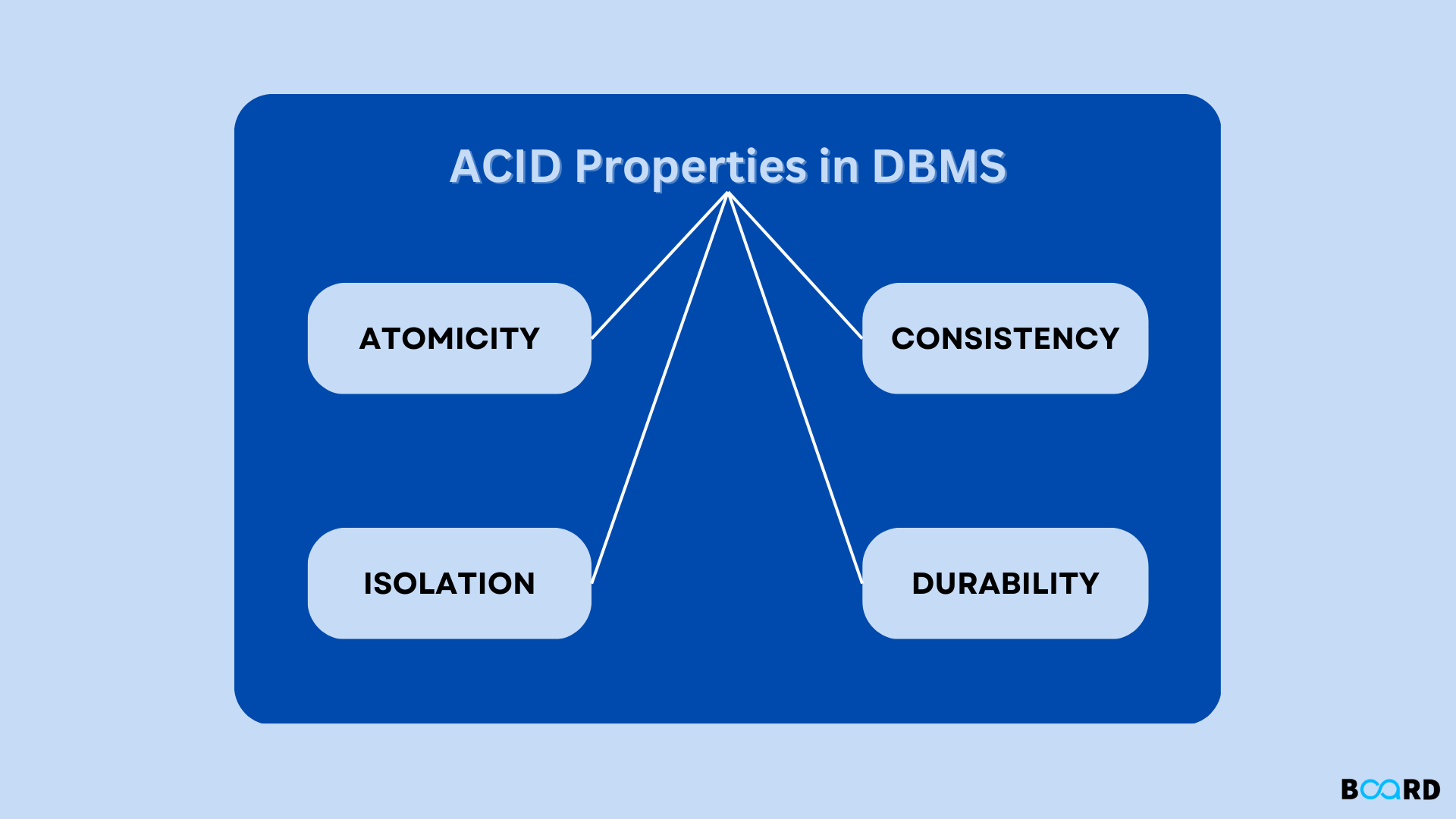PostgreSQL Prowess: Unveiling the Secrets of ACID Properties for Database Mastery

Introduction
PostgreSQL, a powerful and open-source relational database management system, stands as a paragon of data integrity through its adherence to the ACID properties. ACID, an acronym for Atomicity, Consistency, Isolation, and Durability, forms the bedrock of transactional database management, ensuring reliable and secure data handling. This comprehensive guide aims to provide an in-depth exploration of each ACID property within the context of PostgreSQL. Through illustrative examples and intricate SQL queries, beginners will gain a profound understanding of these fundamental principles that govern the reliability and consistency of databases.
1. Atomicity: The Indivisible Transaction
1.1. Defining Atomicity
Atomicity, the first pillar of ACID, dictates that a transaction is treated as a single, indivisible unit. It's an all-or-nothing principle – either all changes within a transaction are committed, or none of them are.
1.2. Implementing Atomicity in PostgreSQL
In PostgreSQL, transactions are initiated with the BEGIN statement and concluded with either COMMIT or ROLLBACK. Let's delve into a practical example:
sql
Copy code
-- Begin a transaction
BEGIN;
-- Perform multiple operations within the transaction
UPDATE account SET balance = balance - 100 WHERE account_id = 1;
INSERT INTO transaction_log(account_id, amount) VALUES (1, -100);
-- Commit the transaction
COMMIT;
If an error occurs at any point in the transaction, the entire set of changes is rolled back using ROLLBACK, ensuring the database returns to its initial state.
2. Consistency: The Pillar of Data Integrity
2.1. The Role of Consistency
Consistency in ACID ensures that a database remains in a consistent state before and after a transaction. Constraints, such as primary key and foreign key constraints, play a crucial role in maintaining data consistency.
2.2. Enforcing Constraints in PostgreSQL
Consider the following example where we establish a foreign key constraint:
sql
Copy code
-- Ensure consistency with foreign key constraints
CREATE TABLE users (
user_id SERIAL PRIMARY KEY,
username VARCHAR(50) UNIQUE
);
CREATE TABLE posts (
post_id SERIAL PRIMARY KEY,
user_id INTEGER REFERENCES users(user_id),
content TEXT
);
Here, the foreign key constraint on the user_id column in the posts table ensures that every post is associated with a valid user, thus maintaining data consistency.
3. Isolation: Concurrent Harmony in PostgreSQL
3.1. Understanding Isolation
Isolation ensures that concurrent transactions do not interfere with each other. PostgreSQL offers various isolation levels, such as Read Committed and Serializable, to control the degree of isolation.
3.2. Setting Isolation Levels in PostgreSQL
Consider an example where we set the isolation level to SERIALIZABLE:
sql
Copy code
-- Set transaction isolation level to SERIALIZABLE
SET TRANSACTION ISOLATION LEVEL SERIALIZABLE;
-- Perform a transaction
BEGIN;
UPDATE account SET balance = balance - 50 WHERE account_id = 1;
INSERT INTO transaction_log(account_id, amount) VALUES (1, -50);
-- Commit the transaction
COMMIT;
By configuring the isolation level, in this case, to SERIALIZABLE, the transaction ensures that no other transactions can access or modify the same data concurrently, maintaining the illusion of isolation.
4. Durability: Safeguarding Against Catastrophes
4.1. The Importance of Durability
Durability guarantees that once a transaction is committed, its changes will persist even in the face of system failures. PostgreSQL achieves durability through write-ahead logging (WAL) and transaction logs.
4.2. Implementing Durability in PostgreSQL
Consider the following example where we enable write-ahead logging:
sql
Copy code
-- Enable write-ahead logging
wal_level = replica
-- Perform a transaction
BEGIN;
UPDATE products SET stock = stock - 10 WHERE product_id = 101;
-- Commit the transaction
COMMIT;
The changes made during the transaction are recorded in the write-ahead log, ensuring that the modifications are durable even if the system crashes.
Conclusion
In conclusion, mastering the ACID properties is paramount for anyone venturing into the realm of databases, and PostgreSQL's steadfast support for these principles solidifies its position as a reliable and robust RDBMS. By incorporating transactions and leveraging PostgreSQL's features, developers can construct scalable and resilient database applications, ensuring data integrity and reliability in their systems. As we've explored in this guide, the meticulous application of Atomicity, Consistency, Isolation, and Durability in PostgreSQL paves the way for a secure and reliable data management system.